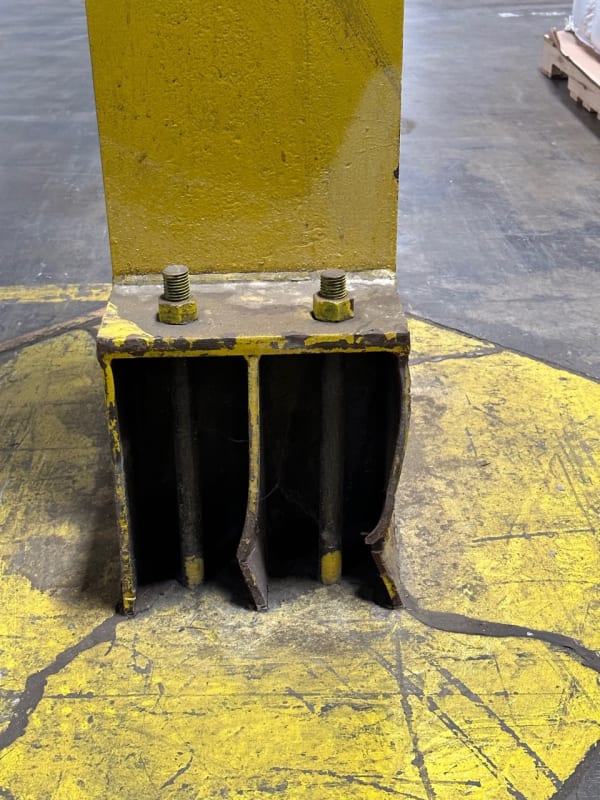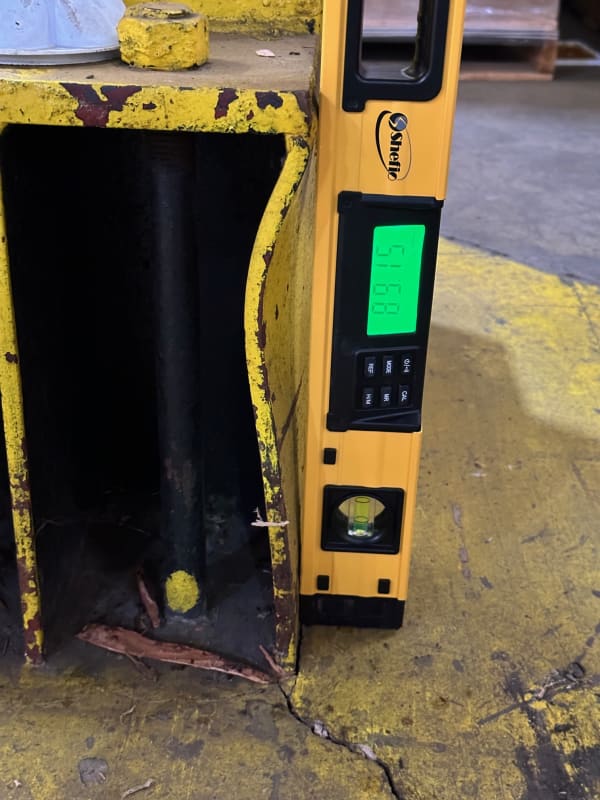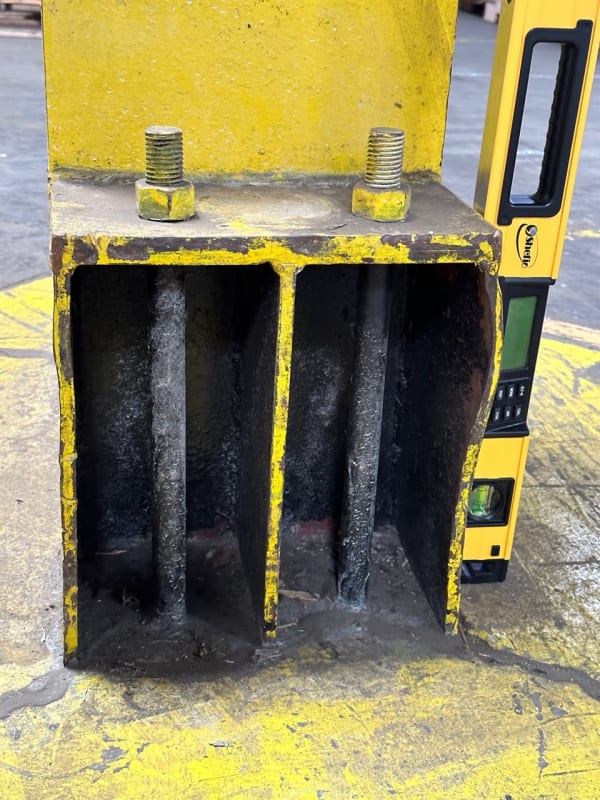Hi, I'm working on a repair project for some of the warehouse steel column bases.
The columns are W12(12"x12") and there are three vertical stiffener plates and a cap plate welded to the both sides of the W12 columns. The column bases are heavily damaged by forklift as attached.
I first thought that the damaged plates need to be removed and replaced. But my boss thinks that the stiffeners are for seismic or lateral resistance with a 1" gap shown on the detail (see pdf file). So, the stiffeners should be continuous without cutting and he suggested that the steel plates need to be heated and be straightened up and then some weld pieces be added to the torn plates.
Looking at the detail on the pdf file, I think the baseplates should be exposed and the bottom of stiffener plates be above the finish floor, rather than embedded into the concrete. If the stiffener plates are partially embedded, what's the purpose of the gap?
Does anybody have worked on this type of connection repair? Can you share me with any insights on this? Thanks!
YK


 [URL unfurl="true"]https://res.cloudinary.com/engineering-com/image/upload/v1685042998/tips/column_base_v0s3wc.pdf[/url]
[URL unfurl="true"]https://res.cloudinary.com/engineering-com/image/upload/v1685042998/tips/column_base_v0s3wc.pdf[/url]
The columns are W12(12"x12") and there are three vertical stiffener plates and a cap plate welded to the both sides of the W12 columns. The column bases are heavily damaged by forklift as attached.
I first thought that the damaged plates need to be removed and replaced. But my boss thinks that the stiffeners are for seismic or lateral resistance with a 1" gap shown on the detail (see pdf file). So, the stiffeners should be continuous without cutting and he suggested that the steel plates need to be heated and be straightened up and then some weld pieces be added to the torn plates.
Looking at the detail on the pdf file, I think the baseplates should be exposed and the bottom of stiffener plates be above the finish floor, rather than embedded into the concrete. If the stiffener plates are partially embedded, what's the purpose of the gap?
Does anybody have worked on this type of connection repair? Can you share me with any insights on this? Thanks!
YK




![[thumbsup2] [thumbsup2] [thumbsup2]](/data/assets/smilies/thumbsup2.gif)